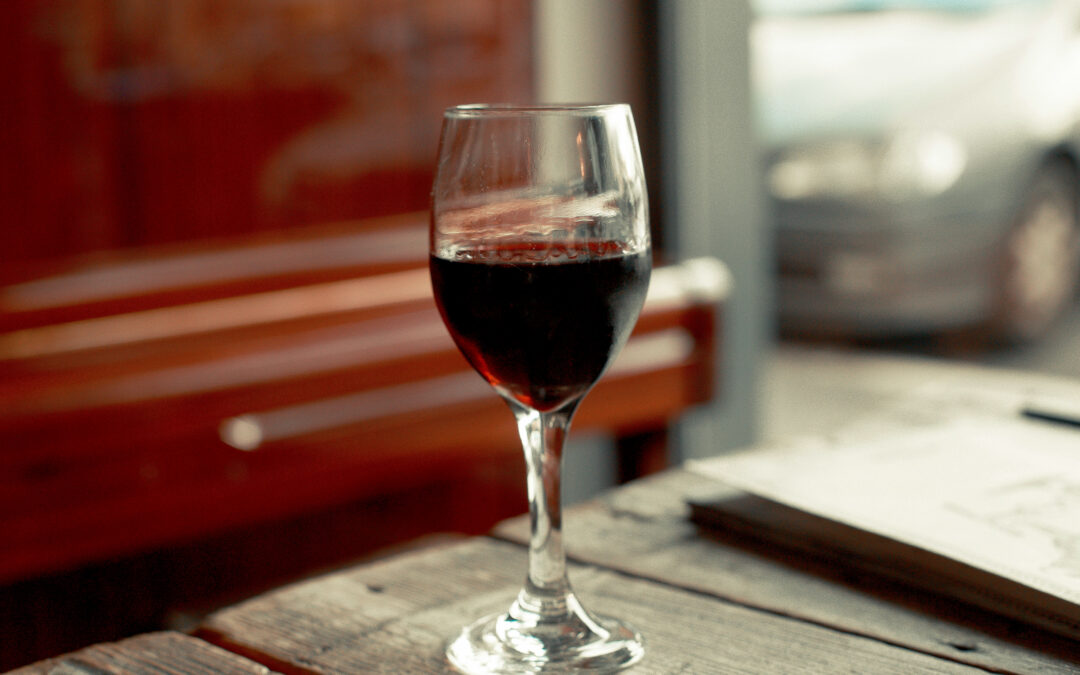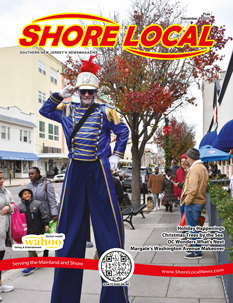Drink Up!
Last week, I attempted to demystify some of the wine terms that are most confusing to both new and seasoned wine enthusiasts. This week, I’d like to continue this discussion and take a dive into the sensory language of wine to describe the aroma, taste, and feel of the beverage. Pour a glass and join me.
F.E.W. is an acronym used in “wine speak” to represent “fruit, earth, and wood.” Different wines have different levels of each of these aroma/flavor characteristics. Let’s start with fruit. It seems natural that wine will taste of fruit. After all, grapes are fruit! Often, though, the fruit we sense in wine is quite different than the grapes used in making it. A wide range of fruits — lemons, green apples, tangerines, apricots, cranberries, strawberries, blackberries, cherries, plums, raisins, and many more – are recognized when drinking wine. A good example is the Brovia Dolcetto D’Alba Vignavi from the Piedmont region of northern Italy. This dry wine has the flavors of ripe dark fruits like plum, black cherry, blackberry and strawberries.
Furthermore, fruit flavors can be identified as under-ripe, ripe, or over-ripe. Fruity aromas or flavors in wine are often mistaken for sweetness. However, fruity wines can actually be quite low in residual sugar, designating them as a dry wine. The J. Lohr Tower Road Petite Sirah demonstrates this well. On the palate, you get the wonderful flavors of chocolate-covered raisins, blackberry, blueberry, and vanilla. That sounds sweet, right? The residual sugar is 0.07 grams per liter, which equates to less than three-quarters of one-percent residual sugar, making it a dry red wine.
Skipping over in the acronym to wood (oak), some wine is fermented and/or aged in oak barrels. The aroma and flavor of the wood can be sensed in the finished wine. Typically, the aromas and flavors attributed to wood are oak, cedar, vanilla, baking spices, and caramel. Let’s look at a few examples. Ferrari-Carano Fumé Blanc Sauvignon Blanc is a white wine aged in French oak barrels for two months prior to bottling to add body, complexity and depth, as well as notes of wood and baking spices. On the other hand, the Joel Gott California Sauvignon Blanc is aged in stainless steel tanks, making the wine lighter-bodied, crisper and very refreshing. The Chidaine Touraine Gamay from the Loire Valley of France is an example of a red wine aged in stainless steel. The result is a “fruit-forward,” light-bodied red wine with ripe red fruit flavors, like strawberry and raspberry, accentuated. Alternatively, the Jean-Paul Dubost Moulin-a-Vent ‘En Brenay” is a Gamay wine that is partially aged in concrete vessels and partially in oak barrels. This resulting wine is medium-bodied with more wood and spice notes and less notable fruitiness.
In general, a flavor characteristic in wine that cannot be attributed to fruit or wood falls into the category of earthiness. In red wine, we often use the term “earthiness,” whereas we say “minerality” in white wines. Forest floor, mushrooms, sea mist, wet straw, barnyard, gravel, river stones, etc., are all characteristics that can be recognized in wine and categorized as earthiness or minerality. Salinity/sea salt, chalk, crushed rocks, wet stones, slate, limestone, gravel, flint, oyster shell, petrichor (the smell of rain on dry surfaces) or even the aroma of standing next to a hot brick wall are some specific examples of mineral elements in wine. Minerality can also evoke a wine’s mouthfeel — pebbles and slate are smooth, while gravel or chalk are drying. For example, the Domaine De La Bregeonnette Muscadet is a wonderful white wine from the western Loire Valley, near the Atlantic Ocean. This amazing wine is produced exclusively from a grape named Melon de Bourgogne grape, but everyone just calls it Muscadet. This is a light, fresh wine with notes of green apple and citrus and a touch of salinity that makes it a perfect pairing with shellfish, especially oysters. The Domaine Vigneau-Chevreau Vouvray Cuvee Silex Sec, made from 100% Chenin Blanc, and the Henri Bourgeois Sancerre Argilo-Calcaire and Silex made from 100% Sauvignon Blanc are also great examples. Silex is a unique type of limestone soil that adds a distinctive flinty or smoky mineral character and vibrant acidity to wine grapes grown in that terroir of the Loire Valley.
I used the word “body” multiple times above. In wine-speak, body is a term used to describe the weight and or texture of the wine in your mouth. A simple example to demonstrate this concept is something most of us are familiar with: milk. If you drink heavy cream, followed by whole milk, followed by 2% milk, followed by skim milk, each feels increasingly lighter on your tongue. Wine can be the same. “Full-bodied” wines are notably heavier on the palate and sometimes described as thicker or more viscose, while “lighter-bodied” wines are less heavy and often referred to as smooth or silky. To feel the difference, take a sip of Sauvignon Blanc for light, Chenin Blanc for medium, and Chardonnay for a full-bodied white wine.
How the wine is aged also affects the body. Balletto Family Vineyards in the Russian River Valley produces both an oaked (aged in oak barrels) and an unoaked (aged in stainless steel) Chardonnay. The Balletto Unoaked Teresa’s Chardonnay, named for the owner’s wife, is described as a medium-bodied white, while the Balletto Chardonnay (Oaked) is described as full-bodied. Additionally, the texture of the unoaked wine is smoother on the palate while the oaked is more viscose. These wines use the same varietal from the same vineyard; aging makes all the difference.
I hope these explanations helped enhance your understanding of the vocabulary used to describe wines. Next week, I will conclude the language of wine articles with the words that are arguably most misunderstood: sweetness/dryness, tannins, acidity, and finish. If you have questions or comments, contact me at dsetley@passionvines.com or stop by the store. Until next time, happy wining!
David Setley is enjoying his retirement from higher education as a wine educator and certified sommelier at Passion Vines in Somers Point, New Jersey.
















